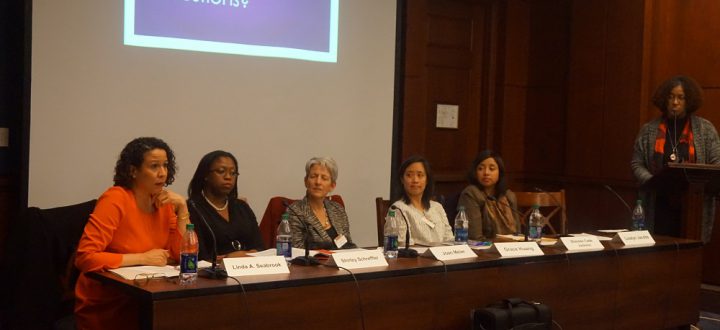Addressing Domestic Violence in the Workplace

Recently, Carie Charlesworth was fired from her teaching job in San Diego simply because she is a victim of domestic violence. Earlier this year Ms. Charlesworth’s abusive ex-husband appeared in the school parking lot to confront Ms. Charlesworth. He was arrested and subsequently incarcerated, but several months later the school decided Ms. Charlesworth’s mere presence created a “risk” that he would reappear, and fired her.
Sadly, this is a reality faced by survivors of violence across the country. This practice is unacceptable, but it isn’t illegal. Only six states have laws that prevent employment discrimination on the basis of being a victim of domestic or sexual violence—and California is not one of them.
In the other 44 states, the cycle of victim-blaming and stigmatization continues. The people who most need support and healing are told that they are the problem. And without a job, most victims find it difficult to escape an abusive situation.
Domestic violence is not a “personal” problem that stays at home. Approximately 60% of adults in the U.S. work, so chances are that in a given workplace, many employees are victims, perpetrators, or have a friend or family member who is a victim. In fact, more than 44% of working U.S. adults say they have experienced the effects of domestic violence in the workplace.
Unfortunately, most employers are completely unprepared to address these effects.
“More than 70% of workplaces in the United States do not have formal policies to address workplace violence,” said Maya Raghu, an attorney with Futures Without Violence. As a result, when incidents do occur, an employer‘s first reaction may be to penalize the victim because it seems like the easiest way to address the problem.”
We’re keeping a close eye on SB 400, a California bill that Futures supports that would ban the firing of employees just because they have been victims of violence. If it passes, the state will have taken the first step in the right direction. It’s up to employers, however, to develop a workplace anti-violence program to keep workers safe and productive.
“Employers can make a real difference if they are proactive, instead of waiting for something bad to happen,” said Raghu.
To learn more about the workplace effects of violence, including how to develop a program to address it, visit Workplaces Respond.





